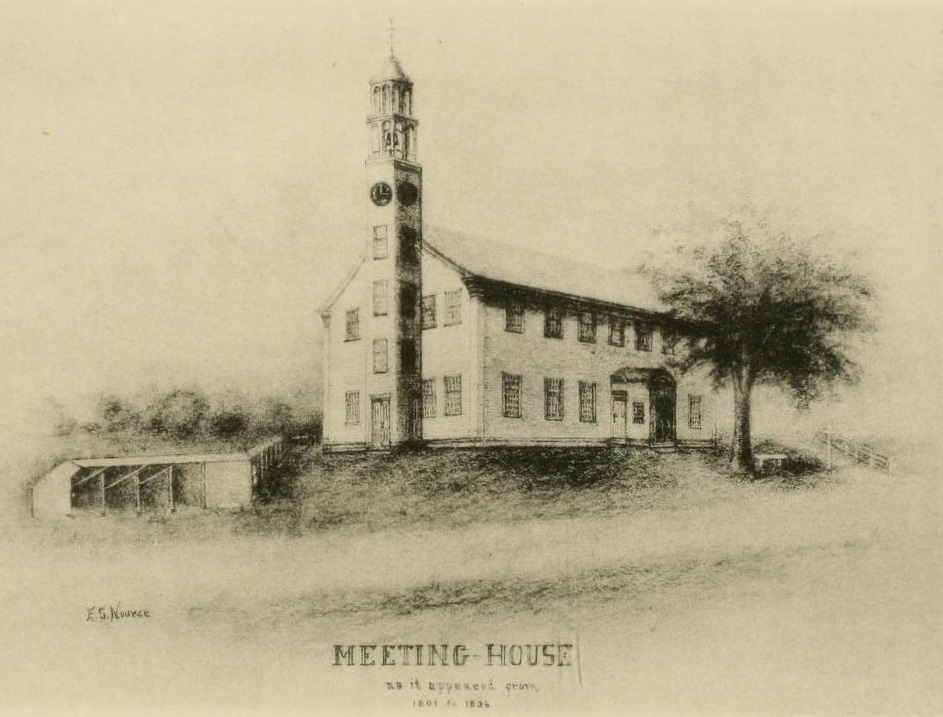
The Inspired Origins of the New England Town Meeting
On Monday, October 17, Westborough will go to Town Meeting to decide some important issues, not least is the fate of the proposed renovation of the Westborough Public Library. As we engage, debatably, in one of the most democratic forms of governance ever to be invented—where we as individual voters have a direct, vocal say in decisions affecting our town—we may want to thank Native Americans for inspiring it.
Many European colonists came to North America to escape the oppressive rule of their government back in the “Old World,” but that does not mean that they arrived with the intention of creating an egalitarian state. In 1630, John Winthrop led seven hundred people across the Atlantic—the largest group of colonists to come to America to date—to found the Massachusetts Bay Colony. His vision was to create “a citty upon a hill,” where the Puritans that he led would live according to the strict principles of their God. But that did not mean that everyone would have an equal role to play in this new society. Winthrop writes,
GOD ALMIGHTY in his most holy and wise providence, hath soe disposed of the condition of’ mankind, as in all times some must be rich, some poore, some high and eminent in power and dignitie; others mean and in submission.
Winthrop’s vision for his new society contrasted sharply with how the Native people he encountered here organized theirs. Native Americans enjoyed a level of personal autonomy and individual freedom that was unknown, and indeed practically unthinkable, to Europeans at the time. Paul Le Jeune, a Jesuit missionary, remarked in 1637, “There is nothing so difficult to control as the tribes of America. All these barbarians have the law of wild assess—they are born, live, and die in a liberty without restraint; they do not know what is meant by bridle and bit.” To this Jesuit’s mind, humans need limits on their behavior and must follow the rule of God’s law; that Native people enjoyed so much individual freedom meant to him that they were little more than wild animals.
Along with individual liberty, Indigenous people highly prized social equality, and these attitudes informed the way that they governed themselves. When the Five Nations (Mohawk, Oneida, Onondaga, Cayuga, and Seneca) came together to form an alliance, they created rules to govern themselves, rules that became known as the Great Law of Peace. In order to minimize any differences among the tribes—rich-poor, small-large, etc.—they mandated that all decisions that came out of this league had to be unanimous. This need to reach consensus also meant that each member who attended these councils felt intense pressure not to disrupt proceedings or impede progress with frivolous objections. Imagine if at Town Meeting we all had to agree unanimously on issues rather than vote Yea or Nay!
The rules spelled out in the Great Law of Peace were just as concerned with setting limits on the great council’s powers as they were in granting them, which has echoes in our own governmental system of checks and balances. Even more, the organization of the Five Nations had strong feminist principles, where women—who owned title to all the land and its produce and who served as clan heads—chose the men who served as sachems, or war chiefs. Even though these two social domains were distinctly separated along gender lines, one was not subordinate to the other. The female-led clan councils set the agenda for the meetings of the Five Nations, and the men could not discuss or consider any matter that was not sent to them by the women. Furthermore, the women could vote down any decision made by the male leaders and demand that the issue be reconsidered.
European and Indigenous people interacted more with one another than we tend to think, at least early on. Of course, that would be the case! We are curious, social creatures. The large presence of both people meant that knowledge and ideas easily moved back and forth between them, and sometimes this exchange resulted in people physically “switching sides.” Even though many Europeans came overseas to convert Indigenous people to their “more cultured” ways, the opposite often happened: many colonial settlers crossed the cultural divide to join Native Americans, even under the threat of punishment. Rarely did the reverse occur. The pull of liberty and freedom is strong!
Winthrop’s ideal of creating a society that adhered to religious-inspired authority went against any notion of democratic self-rule among his people. But it turns out that the Puritans he led had other ideas: they ended up inventing the ultra-democratic New England Town Meeting, where all voters could directly participate in their own governance rather than having laws dictated to them from above. This political system sounds a lot more like those practiced by Native Americans than by one that was divinely ordained by an authoritarian God, so it is quite possible, if not likely, that the Puritans borrowed at least some of their ideas about how to organize themselves democratically from their Native American neighbors.
—Anthony Vaver, Local History Librarian
Works Consulted:
- 1491: New Revelations of the Americas Before Columbus by Charles C. Mann.
- The Dawn of Everything: A New History of Humanity by David Graeber and David Wengrow.
- “The Idea of Freedom in Missionary Writings about the New World” by Catherine Ballériaux in Freedom and the Construction of Europe, ed. Quentin Skinner and Martin van Gelderen.
* * *
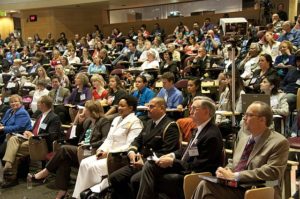
Attend Westborough’s Town Meeting
Now that you have learned about some of the historical origins of the New England Town Meeting, make sure to attend Westborough’s next Town Meeting!
Westborough’s Fall Town Meeting will be held on Monday, October 17 at 7:00 p.m. at the Westborough High School. At this meeting the town will be making decisions about the Library Renovation Project and whether or not to change the Town Seal. All registered voters can participate.
* * *
New Exhibit: The Library’s Story (Plus Add Your Story to the Westborough Archive)
Stop by the Westborough Center to see The Library’s Story – A Westborough Public Library Exhibit. This exhibit explores the history of the Westborough Public Library, which goes back to 1773, and how the library has served as an integral hub to the Westborough community throughout its history. The exhibit starts in the Westborough Center and then continues in and around the rest of the library. The exhibit is also available online.
And once you have learned about “The Library’s Story” tell us yours! We are starting a new annual feature called, “Your Westborough Story.” This year, share your thoughts and memories by answering the question: “Why did you move to Westborough?” (and if you never left Westborough, tell us why you have stayed!). Click on the link to tell your story or stop by the Westborough Center and fill out a paper form. Your contribution will go into the Westborough Archive and become a part of Westborough history!
* * *
Upcoming History Events
The Fall has brought with it a host of history-related programs. Make sure to add them to your calendars.
“Stories in Stone: Explore Our Graven Images,” Sunday, September 25, at 1:30 p.m. in Memorial Cemetery. Discover the secrets told by the Puritan gravestones in Memorial Cemetery (next to Forbes Building on West Main Street). Join local historian Kris Allen as she wanders through and talks about Westborough’s first burial ground, which was founded in 1704 when 5-year-old Nahor Rice was buried there. Learn how carved gravestones constitute the earliest form of Puritan folk art, their fascinating symbolism, the history of our first and most prominent settlers buried in the cemetery, plus the benefits of the Community Preservation Act for this historical gem. This program is hosted by the Unitarian-Universalist Congregational Society of Westborough (UUCSW) and is free.
“A Stroll Down Memory Lane,” Monday, October 3 at 7:00 p.m. in the Westborough Public Library. Town Moderator John Arnold will lead a panel of long-time residents and graduates of Westborough High School in years past who will respond to questions such as, “When you were young, who served the best soda in town?” or “Where did you take your first date?” Get a sense of what Westborough was like in the past through the experiences of your neighbors! This event is sponsored by the Westborough Historical Society and is free and open to the public. For more information, contact Kris Allen at krisallen2@verizon.net.
“The Truth Behind the Tales: The Nipmuc Presence in Westborough, MA,” Monday, November 7 at 7:00 p.m. on Zoom. Cheryll Toney Holley, Leader of the Hassanamisco Nipmuc Band in Grafton will talk about Nipmuc tribal oral history, especially Westborough’s Nipmuc stories, and will uncover the historic basis and Nipmuc perspectives behind each story. Free registration through Zoom will be announced at a later date.
* * *
Photographs from the Westborough Archive Featured on RI PBS
Rhode Island PBS Weekly recently ran a story on the Boston Strangler that featured photographs from the Westborough Archives. The story is about Albert DeSalvo, who attended the Lyman School for Boys here in Westborough before eventually becoming known as the Boston Strangler.
You can view the story here, and if you simply want to jump to the photographs they used from the WPL’s Robert Cleaves Collection of Lyman School Records, they appear at 3:26 and 3:58, although the story is so interesting that you will want to watch the whole twelve minutes of it. The reporter featured in the story discovered a group of archival records created by two Harvard professors, Sheldon and Eleanor Glueck, who tracked Lyman School students as part of their study of juvenile delinquency and resulted in their book, Delinquents in the Making. The WPL owns a copy of their book as part of its Lyman School archival collections. Stop by the Westborough Center to see it if you are interested.
* * *
Did you enjoy reading this Westborough Center Pastimes newsletter? Then subscribe by e-mail and have the newsletter and other notices from the Westborough Center for History and Culture at the Westborough Public Library delivered directly to your e-mail inbox.
You can also read the current and past issues on the Web by clicking here.
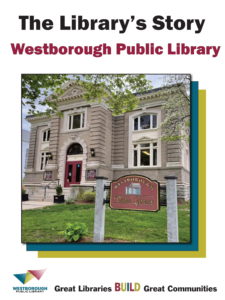
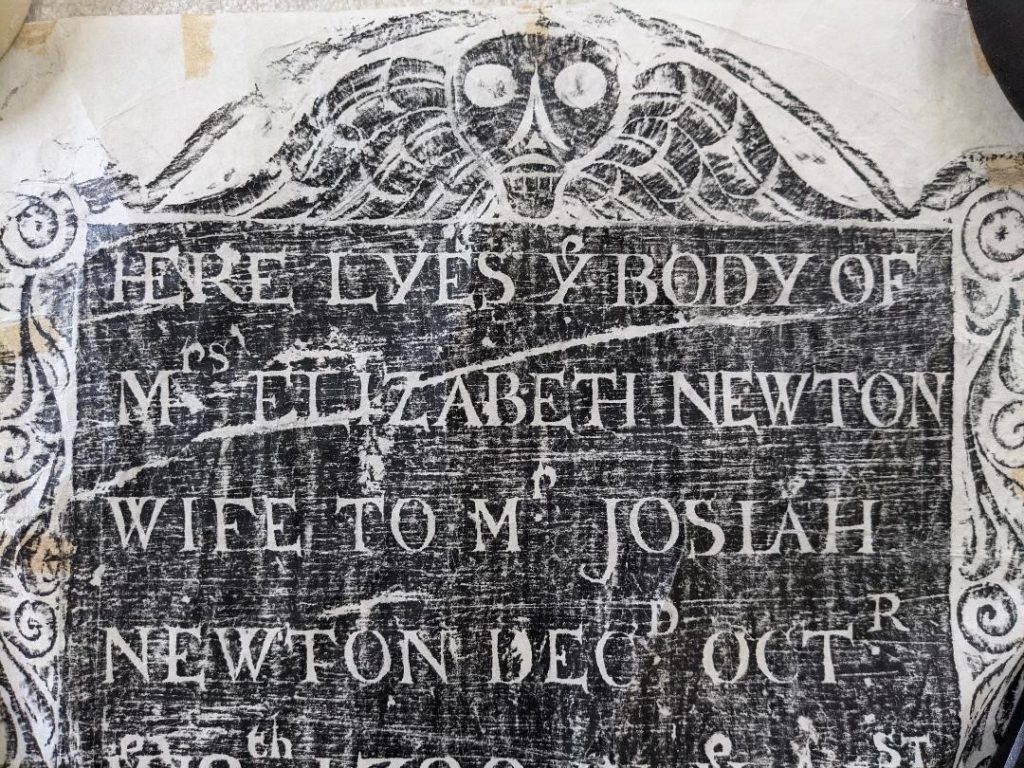
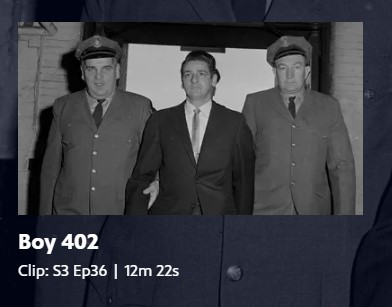
Dear Westborough Center: Thank you so much for this most recent letter. I so enjoy each issue. Keep up the great work. I am fascinated by the possible political science interactions between the native Americans and the new arrivals from Europe. The role of women in Native American politics is extremely important. If I recall, this newsletter introduced me to the notion that it may have been the French missionaries’ reports of Native American political ideas that triggered the Enlightenment in Northern Europe. Gerry Blodgett
Tony-This was fascinating. I’ll never think of Town Meeting the same way again without reflecting on the ancient origins. Especially loved the influence of women’s leadership – and the ability to veto!! Hope you are well.